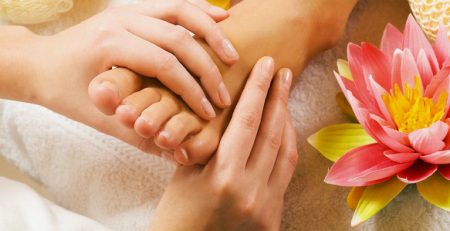When does a Herbal Supplement become a Drug?
Herbal remedies have been used for thousands of years. Herbs are grown, harvested and then dried under specific conditions to have the optimum amount of properties available for use. Whole herbs have many advantages for use in herbal remedies. Whole herbs not only contain chemicals that have the healing properties it is used for; but also contains vitamins, minerals, and many other things that act as buffers.
This makes whole herbs by themselves very safe to take with also little to no side effects. Herbal properties are so effective that about 70% of prescriptions are derived from the medicinal properties of herbs. In recent years research into herbal properties have also led to extracts of certain herbs chemical properties. This then poses the question: When does an herbal supplement become a drug?
Herbalism is a holistic modality that uses combinations of herbs to treat a specific ailment. Holistic modalities get their name because they treat a person as a whole. Treating as a whole means to take the whole person into consideration, treating root causes, and using herbs that match your constitution as well as treating the ailment & symptoms. This wholeism has always extended to using the whole herb up until rather recently. Pharmaceuticals are quite opposite and considered reductionism as opposed to holistic. Reductionism is isolating chemicals found in botanicals and other sources to be used by themselves and in a very concentrated form. This is what makes prescription drugs necessary for doctor supervision because dosages need to be carefully calculated due to the potential harmful effects of overuse and side-effects.
Comfrey is a well know western herb that is almost second to none in its usages to repair skin, moisten the lung, and as an anti-inflammatory. Since this herb contains traces of pyrrolizidine alkaloids, that are found to be harmful to the liver, this herb brings some controversy to the table when using. Before this controversy was ever found out the herb was only ever used for shorter durations and really only as needed. However, not only does this herb not only completely out weigh its remote chances of harm for how extremely well the herb works, but using the herb as a whole still contains all of its natural buffers like: tannins, oils, starch, etc. For any real harmful effects not only would you have to have an almost failing liver, but you would also need to take this herb in such high and concentrated amounts over a long period of time to do further damage.
Ma Huang is another very valuable herb to the Chinese Herbalist. In the west we know Ma Huang as Ephedra, the name of the chemicals (ephedrine) in the herb. Here is an invaluable herb that has not one single report of fatal side-effects in its 2500 year recorded usage. Herbally we use Ma Huang and its strong stimulant properties in a controlled manner for asthma and to help with inducing sweating during early stages of a cold. These strong stimulants were researched and then the chemicals were extracted into concentrated amounts and sold as diet pills! This herbs has NEVER been used for weight loss, yet in concentrated form there were reports of palpitations and other heart/blood related problems with even a couple accounts of fatalities (in people with preexisting heart conditions). This raised quite a buzz, but the many deaths yearly from pharmaceuticals seem to make it on page 12 of the paper. A big mess that could have possibly been avoided had we kept the holistic outlook of herbs.
Currently herbs come in 2 different forms. The first form of concentration is the manufacturing company using chemical markers to isolate certain chemicals to ensure a specific concentration of the ‘effective’ parts of the herbs. These are the closest forms of pharmaceuticals and also the most widely used form. As you browse your health food store you will see most of the bottles of capsules are talking about how concentrated they are, and many will tell you the standard concentration used. The second form of concentration is reducing herbs down into whole concentrations. The most common of which is 5:1, as in taking 5 pounds of herb and ending up with 1 pound. The basis of this concentration is for ease of use, as if the herbs have been pre-decocted for you. This form of concentration is mainly used by herbalists to make formulations or used in herbal formulations. For example a big company will catch on to the trend that Gingko Biloba increases circulation to the brain and therefore has been found effective for memory. These companies will manufacture strong concentrations of the herb and make tablets with them. Herbalist or companies ran by herbalists will use Gingko in a formula along with other herbs used for focus, brain circulation, and memory. These herbalist ran companies will use concentrations when needed and in most cases will use a whole herb extract of 5:1 or 10:1 extracts.
Herbs have the advantage of giving us thousands of years of empirical evidence on what function and effects we can expect from them. There are even some skeptics on those using whole herb reductions even in a 5:1 concentration. Some herbalists find that a few thousand years of empirical advantage over a decade or so over researched uses of concentrations. However, we can’t be stubborn in not accepting possible advances in herbal knowledge. When taking prescription medicine I don’t feel the need to worry about dosage and concentrations as I listen to my doctor’s advice. Therefore when taking herbal supplements and especially herbal remedies I always use a brand that is ran by herbalists. I can expect their advice and dosages are made based on education and experience.








